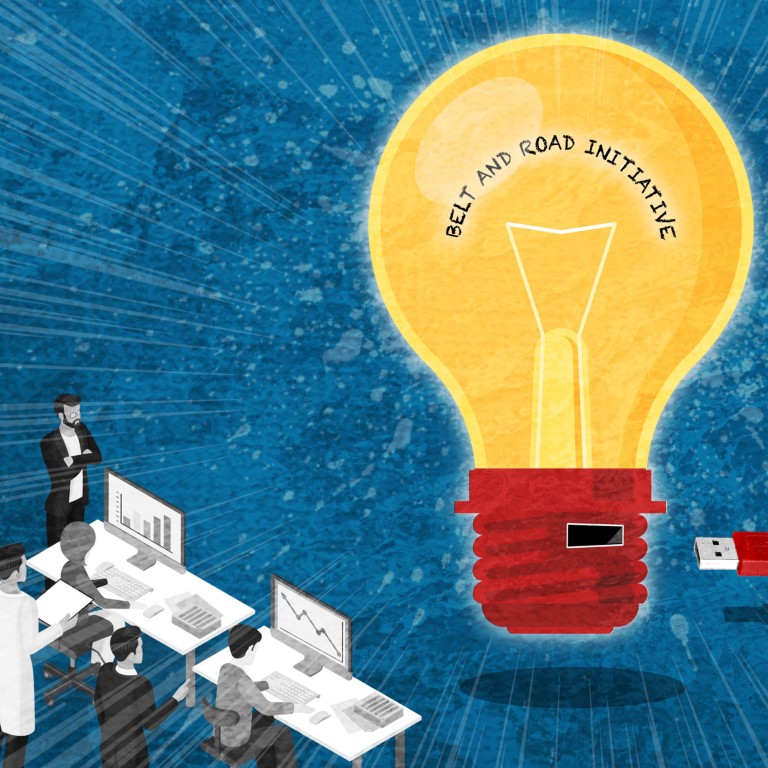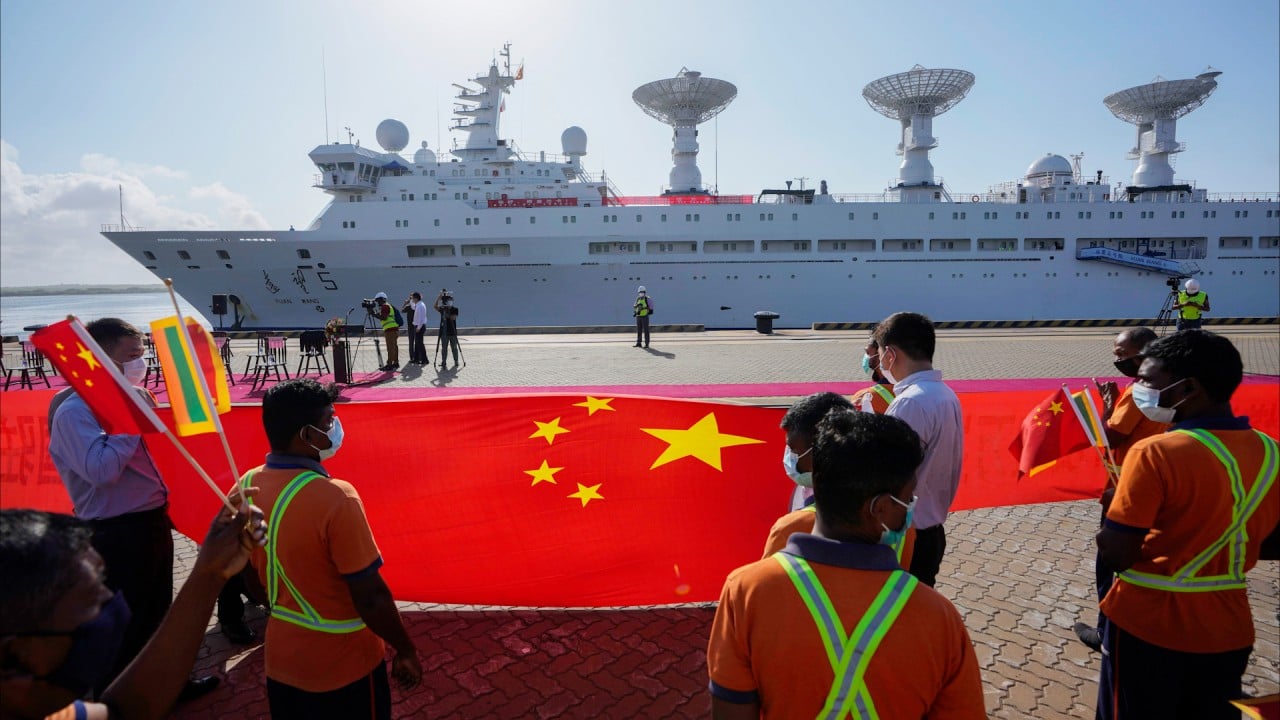
China’s technical expertise touted as new vehicle for progress on embattled, global belt and road
- China seen shifting away from infrastructure-dominated exchanges that long dominated the decade-old Belt and Road Initiative and sparked criticism
- Technology transfers have always been part of China’s belt and road plan, but analysts say Beijing is increasingly prioritising those types of exchanges to boost ties
Chinese agricultural scientist Jia Yinsuo first arrived in Africa in 1994 and went on to dedicate the last three decades to researching maize and supporting local agriculture in 23 countries across the continent.
And his efforts have gained new impetus in the past decade, following Beijing’s launch of a China-centred trading network known as the Belt and Road Initiative in 2013.
“Kenya’s agriculture minister wrote to China’s Ministry of Agriculture, seeking assistance from my team to help local desperate farmers,” said Jia, who was welcomed in 2014 by Kenya’s then-president, Uhuru Kenyatta.
Chinese entrepreneurs such as Jia have been spreading their technical expertise around the world, from crop planting in Africa to traffic management in the Philippines. It’s a burgeoning growth area under the initiative that once prioritised infrastructure to stoke foreign trade.
This spreading of expertise – a departure from massive, debt-shrouded projects of the past such as railways and seaports – is also aimed at polishing China’s global image while cultivating valuable new markets in which Chinese companies can grow.
China defends Africa investments as it gears up for belt and road forum
Transfers of technology have always been officially part of China’s belt and road plan that comprises about 150 nations, but analysts say those types of exchanges are rising up China’s priority list.
“China now prefers to move slowly away from infrastructure investments that had been the norm for roughly the past decade,” according to a statement from the Development Reimagined consultancy in Beijing. “Belt and road partners and China want established projects to start yielding the expected economic returns. It is within this context that transfers of knowledge and expertise come into play.”
Among recent cases, the Philippine city of Davao agreed last year to accept Chinese transport-planning expertise through a deal orchestrated by the Asian Development Bank.
Their project will establish a public bus transport system in Davao, the largest Philippine city outside Metro Manila, with modern electric vehicles and reliable timetables aimed at making rides more comfortable while cutting pollution, according to statements from the development bank.
Technical-expertise sharing has become particularly obvious in Africa over the past few years, Development Reimagined said.
For example, a Shanghai-based research centre has developed a water-saving rice to help improve food self-sufficiency amid droughts in parts of Africa, the Chinese city’s government said on its website. It added that the Shanghai Agrobiological Gene Centre’s technology could be ready to use in Kenya this year after being trialed for six years.
In Nigeria, the Development Reimagined team said, Chinese rice-growing experts are training African farmers to raise output in “suboptimal” conditions. More than 70 per cent of Nigerians farm, mainly at the subsistence level, according to data from the Food and Agriculture Organisation of the United Nations.
Wara Agricultural Park, a farm operated by China’s Green Agricultural Development company in the Nigerian state of Kebbi, avails Chinese experts to teach rice-growing techniques, Xinhua reported in 2021. A lack of technology, money and social stability complicate rice-growing efforts in the country despite an abundance of land, the party mouthpiece said.
China “continued to dispatch agriculture experts” last year to Tanzania, Kenya, and Uganda for technical assistance on crop production and pest control, Development Reimagined said.
China investors eye Africa’s Mauritius as it goes green, tries to sweeten deals
For his part, Jia led a team that combined a maize variety for seven East African countries – a boost to local farmers facing crop disasters. His efforts helped the 74-year-old become appointed chairman of the China branch of the African Academy of Sciences.
After collecting 1,566 varieties of corn seeds back to China in 2005, Jia developed and released higher-yielding corn varieties – growing up to 1,500kg (3,300 pounds) per mu (0.07 hectares, 0.16 acres) annually by crossbreeding domestic and African varieties. Much of that was, in turn, used in China, providing a boost to national food security.
Feng Xuejie, director of the Institute of Tropical Fruit Trees at the Hainan Academy of Agricultural Sciences, said: “I was invited to Thailand to participate in the [Association of Southeast Asian Nation’s] durian-related forum, where I clearly said China’s durian industry was not going to impact the Southeast Asian market. Instead, our goal is to introduce our own cultivation techniques to foster agricultural reciprocity between the two regions.”
According to Feng, who is also a researcher at the Hainan Academy of Agricultural Sciences, his team is planning to work with the Durian Association in Thailand to build fertiliser-production facilities to fight some of the viruses commonly found in the tropical fruit.
In medical care, the consultancy said, Chinese hospitals have paired up with 46 counterparts in 41 African countries since 2015. Most recently, Walvis Bay Hospital in Namibia signed a cooperation deal in November with the Zhejiang Provincial Hospital of Traditional Chinese Medicine.
“China, through its [belt and road] cooperation with Asean countries in the agricultural sector, can export more advanced rice seeds to gain profits, while enriching China’s local varieties at the same time,” Feng added.
Urban planning and transport improvements, expertise in renewable energies such as solar and wind power, and the development of electric vehicle batteries are likely to headline China’s expertise offshore, said Eduardo Araral, an associate professor of public policy at the National University of Singapore.
“At some point, I guess there’s a limit to how much hardware you can put in place,” he said.
These contracts promote Beijing’s effort to make the second decade of its 11-year-old belt and road “small and beautiful”, with less of the financial risks or pollution allegations that caused friction in the past, according to analysts.
“This kind of move into more value-added exports, if you’d like, represents a safer way of extending the belt and road,” said Naubahar Sharif, head of the public policy division at the Hong Kong University of Science and Technology.
“It represents that China has arrived, that we’re not just using our cheap labour to build your roads and lay down tracks – we have value-added knowledge,” he said.
Fancy a safari? African countries on hunt for lion’s share of Chinese tourists
China has shared its expertise through the belt and road since the start, including techniques to improve grain and rice stability, said Wang Yong, a professor at the School of International Studies at Peking University. Such efforts are likely to expand now because of the small-and-beautiful mandate, he said, especially in countries with a relative lack of technical expertise.
“This aspect of the belt and road will definitely be increasing,” Wang said. “The amount of expertise being shared will just go up.”
Agricultural aid dates back even farther, to the early 2000s, and since then the Chinese government-backed Agriculture Technology Demonstration Centre in Africa has introduced farming techniques to 22 countries on the continent.
And in Central Asia, the state-run Global Times said in September, Chinese “technology and experience” in ecological monitoring can give local people the “expertise” to build hydropower stations and photovoltaic power plants.
An 800-megawatt (MW) solar-power project being developed by PowerChina Guizhou Engineering in Qatar includes a sharing of technical expertise, according to the Middle Eastern country’s consulate in Hong Kong.
And an arm of the Chinese photovoltaics firm Trina Solar will provide “close support at every step” of a Qatar-based solar-power-supply deal – starting from presale product design – the consulate said.
China and multiple belt and road partners plan to work together at sea on “the harmonisation of marine technological standards and marine technology transfers”, according to the chair’s statement from the October 2023 Belt and Road Forum for International Cooperation.
Individual Chinese contractors will find that jobs overseas give them more credibility outside China when it comes to against established Western consultancy brands, Sharif said.
An expertise-led phase of the belt and road risks getting China stuck in developing countries, Sharif said. Wealthier nations would collect bids from the world’s top sources of expertise – which may or may not be Chinese – and have enough money to pick the best one.
Most experts involved in the Belt and Road Initiative in Africa rely more on the government’s pockets
And as China becomes better known for its technical expertise, it should expect the same criticisms from the West as it has taken for other parts of the belt and road, Sharif said.
Earlier phases of the belt and road had raised fears that it was difficult for small, impoverished countries to to pay back project loans.
In setting up new belt and road projects in Africa today, China might create joint ventures as “payment terms” for the Chinese side’s help, Development Reimagined said.
Other expertise sharing may be repaid indirectly, such as in terms of access to a host country’s natural resources or political support for China in international organisations.
“My projects in Africa are not about financial profit,” Jia said. “Most experts involved in the Belt and Road Initiative in Africa rely more on the government’s pockets, and China is doing this to shape a better image as a global power.”
China resets relations with belt and road partners through green investment push
In 2014, Jia set up Hebei Richard Agricultural Science & Technology, which helps execute belt and road projects in Africa.
“China has always emphasised capacity building – teaching a person to fish – in its overall development cooperation strategy with African countries,” Development Reimagined said.
Gary Ng, a senior economist at Natixis Hong Kong, said that China’s approach of introducing belt and road expertise comes more as a result of having limited room to invest overseas amid decelerating economic growth and an inability and reluctance in the developing world to raise debt after the pandemic shocks.
“China is also worried about credit risk, as the collateral may not be worthy or profitable after all, despite the geopolitical significance of some projects,” he said. “It is still likely that China is gaining, but just not in the old way.
“Chinese state-owned firms will still be the core force in implementation and related business opportunities.”




